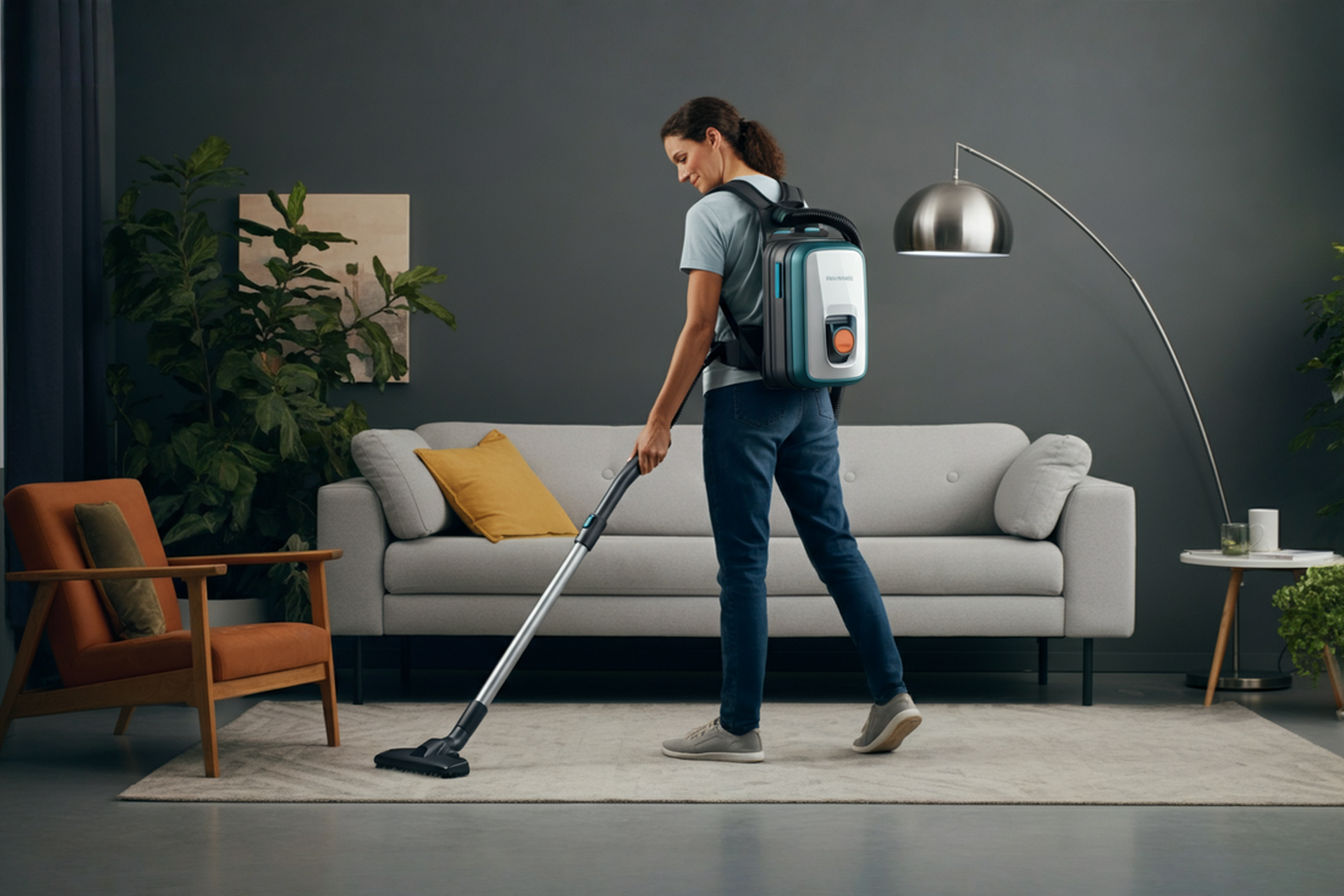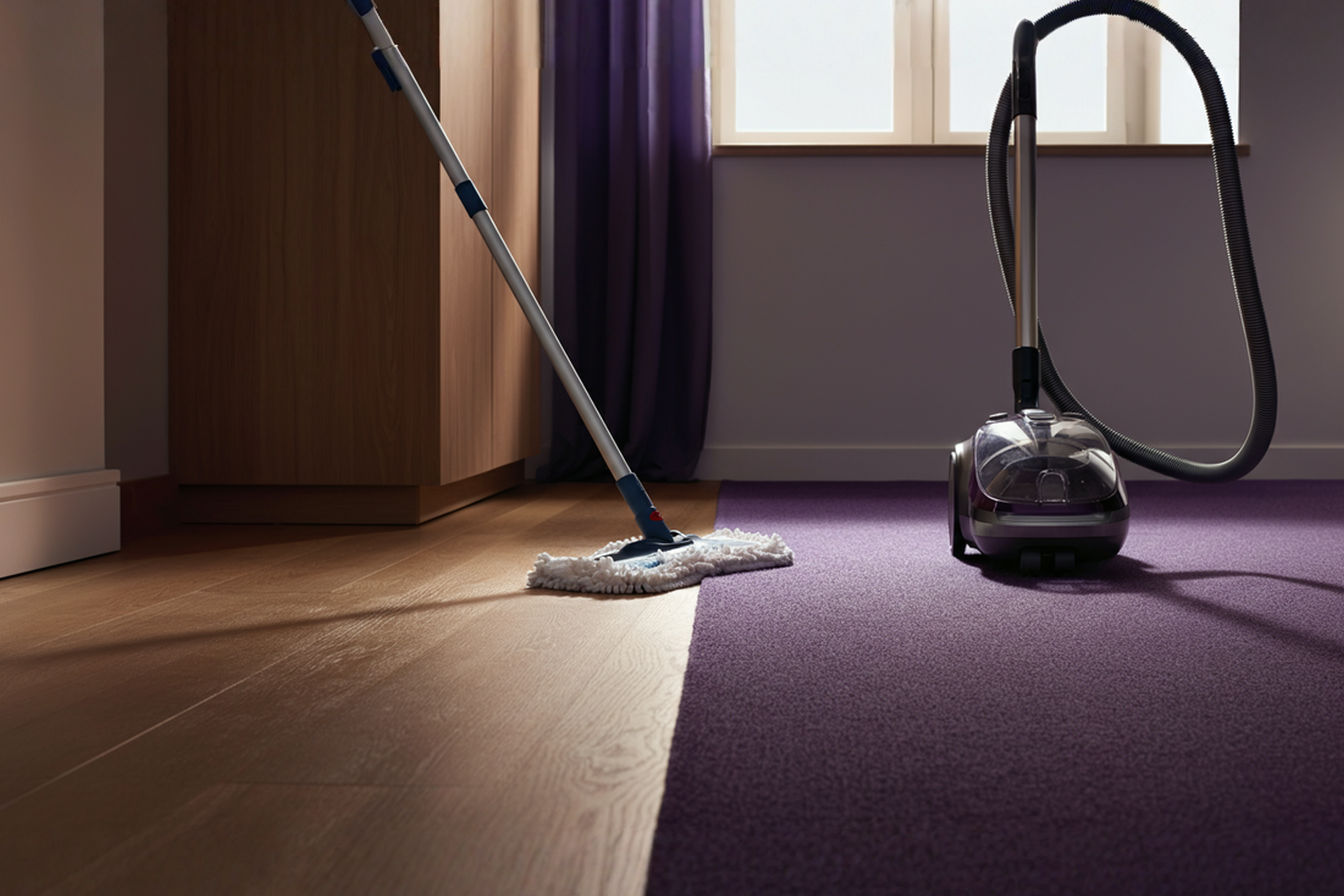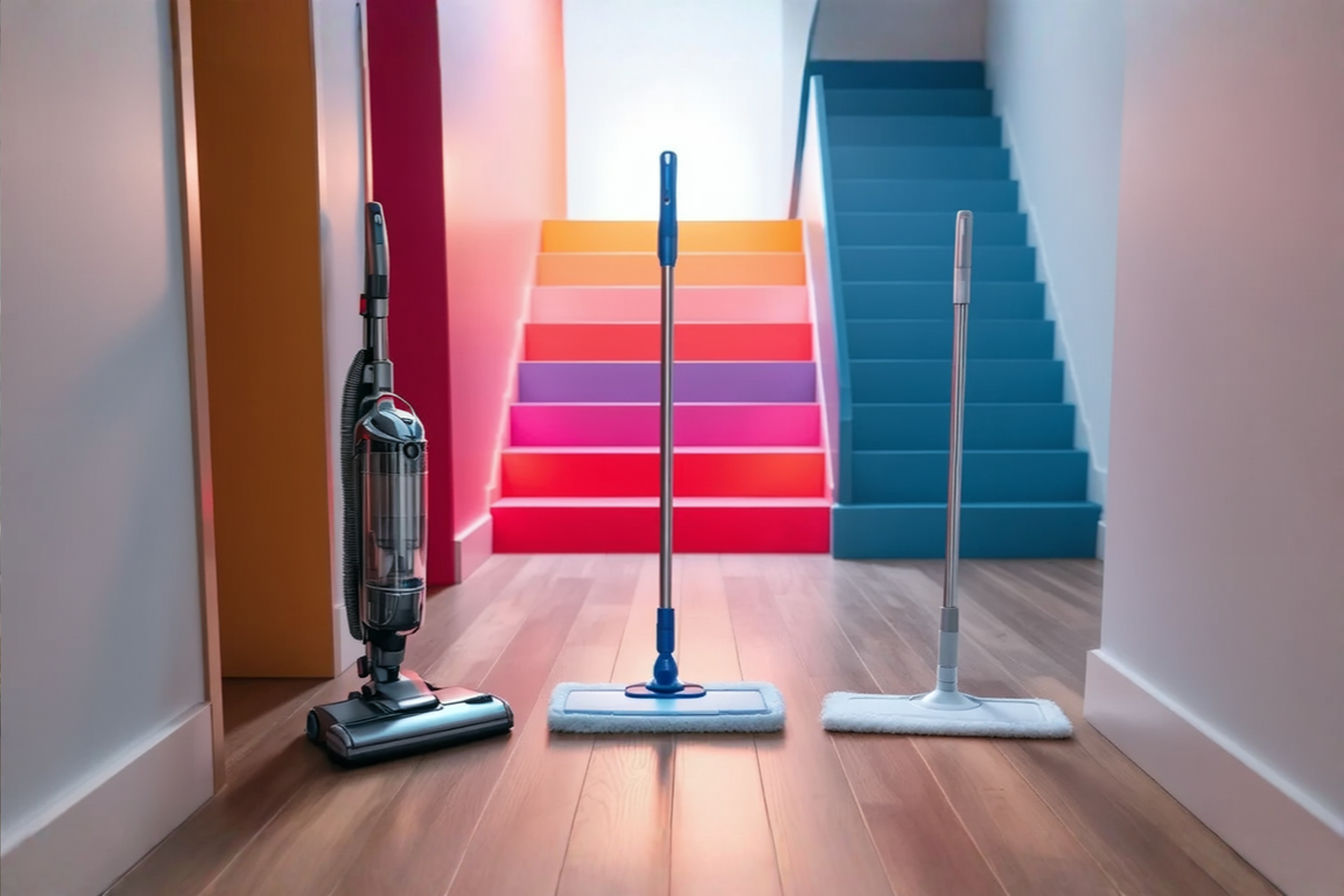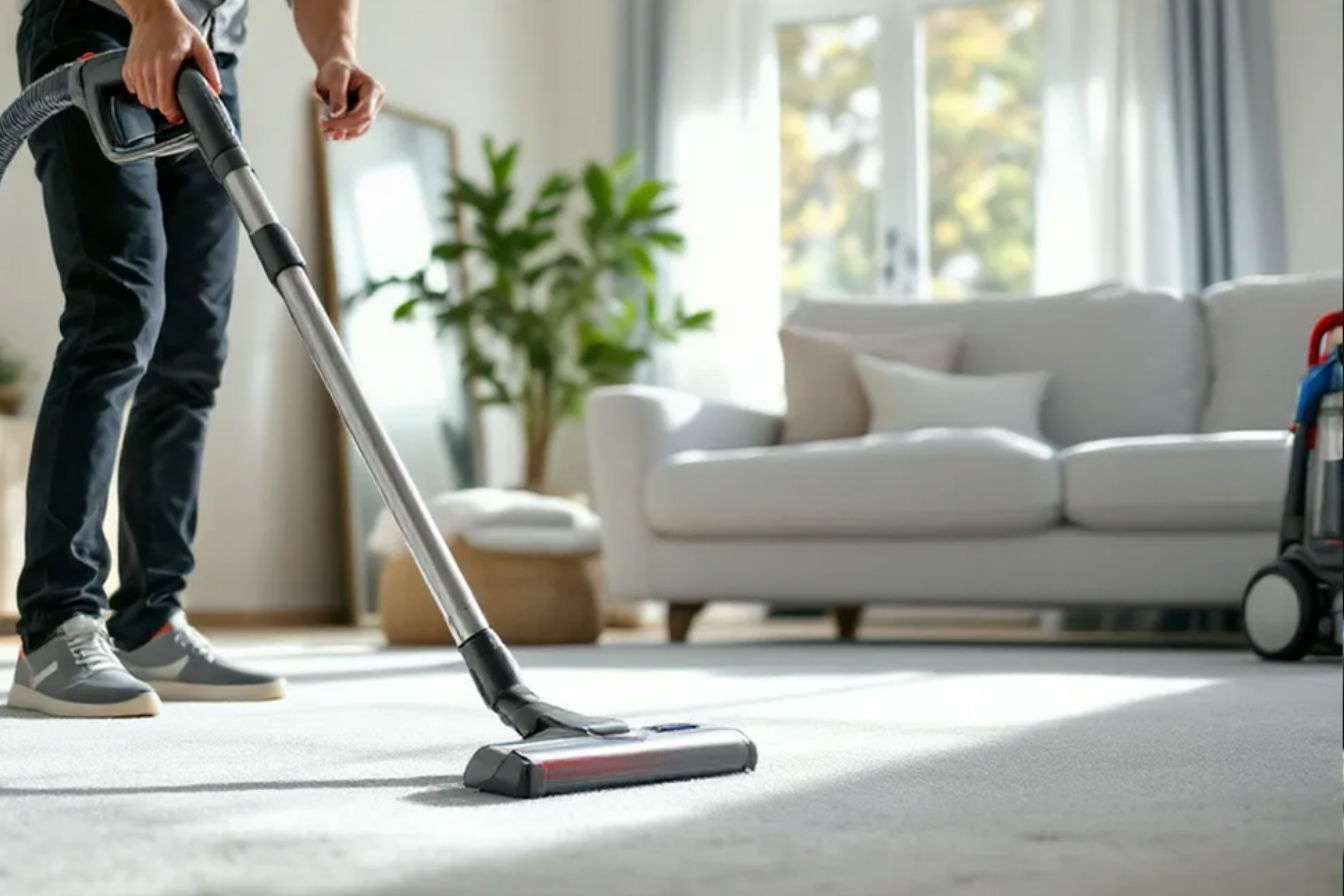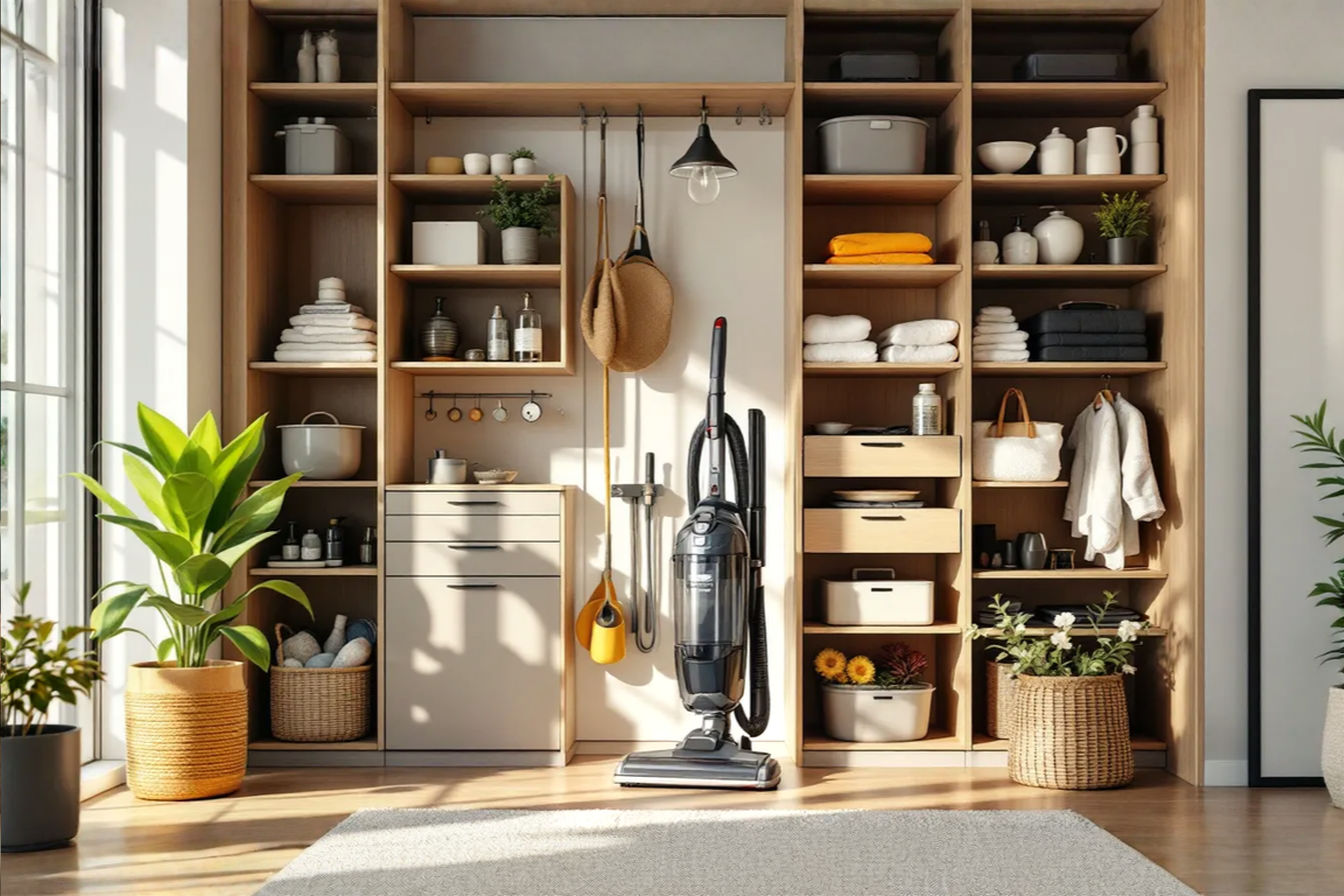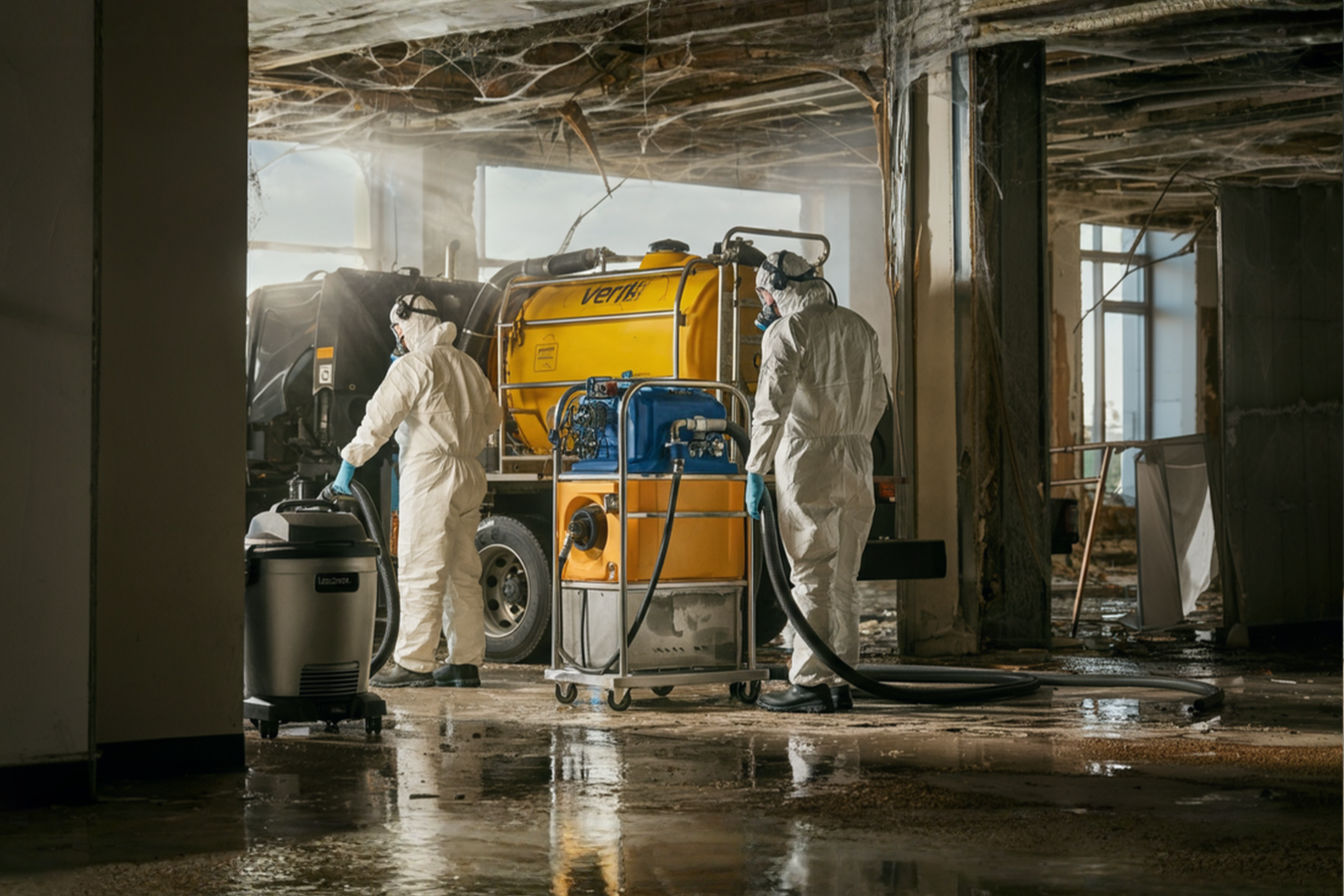This post may contain affiliate links. If you make a purchase through these links, we may earn a commission at no additional cost to you.
Maintaining a spotless home while juggling life’s demands can feel like an endless battle. Many homeowners struggle with inefficient cleaning routines that consume valuable time without delivering satisfactory results. The solution may lie in adopting commercial cleaning patterns – systematic approaches used by professional cleaners to maximize efficiency and effectiveness.
Professional cleaners consistently achieve impressive results in minimal time because they follow established patterns and techniques rather than cleaning randomly. These methods aren’t trade secrets but practical approaches developed through years of experience to optimize workflow and ensure thorough cleaning.
This comprehensive guide explores how to transform your home cleaning routine by implementing professional techniques. You’ll discover systematic cleaning patterns, time-saving strategies, and equipment selection tips that commercial cleaners use daily. By adapting these professional methods to your home environment, you can significantly reduce cleaning time while achieving better results.
Understanding Commercial Cleaning Principles
The fundamental difference between amateur and professional cleaning lies in the approach. Homeowners often clean reactively, addressing visible messes or tackling rooms randomly. In contrast, commercial cleaners work systematically, following established patterns that eliminate backtracking and maximize efficiency.
The science behind professional cleaning efficiency involves movement economy – minimizing unnecessary steps, reaches, and motions. Commercial cleaners carefully plan their sequence of tasks to utilize energy efficiently. They understand that disorganized cleaning not only wastes time but also increases physical strain and decreases motivation.
Professional methods save time through task batching – grouping similar activities together rather than switching between different cleaning tasks. This approach reduces the mental load of task-switching and creates momentum that carries through the entire cleaning process. When you adopt these principles at home, you’ll notice immediate improvements in both cleaning speed and quality.
Essential Commercial Cleaning Equipment for Home Use
Professional cleaners rely on specialized tools that improve efficiency and effectiveness. While investing in commercial-grade equipment can enhance your cleaning routine, many professional tools have household equivalents that deliver similar benefits.
Several professional-grade tools merit consideration for home use. A microfiber cleaning system with color-coded cloths prevents cross-contamination between different areas. An ergonomic spray mop with refillable reservoir delivers consistent moisture without the bulk of traditional mops. A commercial-quality vacuum with HEPA filtration removes more allergens and typically lasts longer than consumer models.
Cost-effective alternatives include using a caddy system to organize household cleaning supplies, purchasing microfiber cloths in bulk, and investing in vacuum attachments rather than specialty cleaning tools. The key is selecting multipurpose tools that handle various cleaning tasks rather than single-purpose gadgets that create clutter.
Organizing your cleaning toolkit dramatically impacts efficiency. Professional cleaners carry everything they need in one portable system, eliminating repeated trips to gather supplies. Create your own mobile cleaning station with essential products and tools arranged by cleaning zone or task type. This preparation alone can reduce cleaning time by up to 30% by eliminating wasted movement.
The Zone Cleaning Method: Dividing Your Home Like Professionals
Commercial cleaners break large spaces into manageable sections called zones. This systematic approach prevents the overwhelming feeling that comes from viewing your entire home as one massive cleaning project.
To map your home into cleaning zones, divide it into logical sections based on function rather than room definitions. A zone might be a bathroom, kitchen work area, or living room seating arrangement. The ideal zone can be thoroughly cleaned in 20-30 minutes, making progress visible and maintaining motivation.
Creating a zone cleaning schedule involves assigning specific zones to different days. Rather than attempting to clean everything in one exhausting session, focus intensively on one or two zones daily. This method ensures every area receives regular attention while preventing cleaning burnout.
The zone approach adapts easily to different home sizes. For smaller homes, zones might be entire rooms, while larger homes might divide each room into multiple zones. The key benefit remains consistent – focused cleaning attention on a defined area yields better results than scattered efforts across the entire home.
Top-to-Bottom and Left-to-Right Cleaning Patterns
Professional cleaners follow the laws of physics when establishing cleaning patterns. The top-to-bottom approach works with gravity instead of against it. Dust and debris naturally fall downward, so cleaning higher surfaces first prevents recontaminating already-cleaned lower areas.
Begin by addressing ceiling fans, light fixtures, and high shelving. Then move to mid-level surfaces like countertops, tables, and chair rails. Finally, clean baseboards, floors, and other ground-level surfaces. This gravity-based cleaning pattern eliminates redundant work and ensures fallen dust gets captured in your final vacuuming or mopping.
The methodical left-to-right approach (or right-to-left for left-handed people) creates a systematic pattern that ensures no surface gets missed. When cleaning a room, establish a starting point and move in one direction around the space, addressing each surface before moving to the next. This technique prevents the common problem of missing spots that occurs when cleaning randomly.
Preventing re-contamination requires conscious attention to your cleaning sequence. Always work from clean areas toward dirty ones. In bathrooms, for instance, clean the sink and mirrors before tackling the shower and toilet. This pattern prevents transferring germs from heavily soiled areas to cleaner ones.
Time-Based Cleaning Techniques from Commercial Settings
Commercial cleaners work within strict time constraints, developing techniques to maximize productivity within defined periods. These time-management approaches translate effectively to home cleaning.
The 15-minute power clean method involves setting a timer and focusing intensely on one small area. This technique leverages Parkinson’s Law – the principle that work expands to fill the time available. By imposing a tight deadline, you’ll work more efficiently and avoid perfectionism that slows progress.
Setting time limits for different tasks creates accountability and prevents cleaning sessions from consuming your entire day. Assign realistic timeframes to each cleaning task: 10 minutes for bathroom surfaces, 15 minutes for kitchen counters, or 20 minutes for vacuuming common areas. These boundaries maintain focus and create natural breaks.
Using timers to maintain pace transforms cleaning from an open-ended chore into a timed challenge. Many professional cleaners use interval timing – working intensely for 25 minutes followed by a 5-minute break. This technique, similar to the Pomodoro Method, sustains energy and concentration throughout longer cleaning sessions.
Two-Step Cleaning: The Professional’s Secret
One of the most effective commercial cleaning techniques involves separating the cleaning process into distinct phases. This two-step approach delivers superior results with less effort than attempting to clean everything in a single pass.
Pre-cleaning involves rapidly removing clutter, gathering obvious trash, and applying cleaning solutions to surfaces that require dwell time. This preliminary step creates clear working spaces and gives products time to dissolve soils. Detail cleaning follows, focusing on thorough attention to each surface without interruption from preparatory tasks.
The importance of dwell time cannot be overstated. Many cleaning products require several minutes of contact to effectively break down soils and disinfect surfaces. Professional cleaners apply products to multiple areas, then circle back to wipe them after sufficient dwell time. This strategic waiting allows chemistry to do the heavy lifting instead of physical scrubbing.
Applying the two-step method varies by room. In kitchens, pre-clean by applying degreaser to tough areas and clearing countertops before detailed cleaning of appliances and surfaces. In bathrooms, spray shower surfaces and toilets with cleaner before organizing personal items and cleaning mirrors. This sequence maximizes product effectiveness while maintaining efficient workflow.
Commercial-Grade Products Worth Using at Home
Professional cleaners select products based on effectiveness rather than marketing claims. While some commercial products are too harsh for residential use, others deliver superior results that justify their adoption in home cleaning routines.
Effective all-purpose cleaners serve as the foundation of a streamlined cleaning arsenal. Look for concentrated formulas that can be diluted for different cleaning tasks. These versatile products replace multiple single-purpose cleaners, reducing both cost and storage requirements. Many professional-grade all-purpose cleaners now come in environmentally responsible formulations.
Specialized products that deliver professional results include enzyme cleaners for protein-based stains, oxygen bleach for organic stains, and non-acid bathroom cleaners that prevent surface damage. These targeted solutions address specific cleaning challenges more effectively than general cleaners.
Eco-friendly alternatives to harsh commercial chemicals have improved dramatically in recent years. Many professional cleaning companies now use plant-based surfactants, hydrogen peroxide-based disinfectants, and concentrated formulas that reduce packaging waste. These options deliver commercial-level performance without introducing harsh chemicals into your home environment.
Room-Specific Commercial Cleaning Strategies
Professional cleaners adapt their techniques to the unique challenges presented by different rooms. These specialized approaches address the particular soils, surfaces, and sanitizing needs of each space.
Kitchen deep cleaning patterns focus on food safety and grease management. Professionals clean from least to most soiled areas – typically starting with upper cabinets, moving to appliance exteriors, then countertops, and finally floors. They pay special attention to high-touch areas like refrigerator handles, microwave buttons, and sink fixtures where cross-contamination can occur.
Bathroom sanitizing techniques prioritize disinfection alongside aesthetic cleaning. Commercial cleaners address highly contaminated areas like toilets last to prevent spreading germs. They use separate cleaning tools for different bathroom zones and apply disinfectants with sufficient dwell time to kill pathogens effectively. Special attention goes to ventilation grills where mold tends to accumulate.
Living area rapid maintenance methods focus on efficient dust management and organization. Professionals use microfiber systems that capture dust rather than redistributing it. They clean in a top-down, systematic pattern around the room, lifting objects to clean under them rather than around them. This thoroughness prevents dust buildup that creates more work over time.
Bedroom allergen reduction tactics emphasize frequent laundering of bedding, vacuuming with HEPA filtration, and dust-trapping techniques. Commercial cleaners in healthcare settings pay particular attention to frequently overlooked dust collectors like light fixtures, headboards, and under-bed areas. These spaces significantly impact indoor air quality and sleep health.
Maintaining Momentum: Avoiding Common Cleaning Pitfalls
Even professional cleaners struggle with motivation and efficiency challenges. The difference lies in having strategies to overcome these obstacles.
Cleaning fatigue occurs when motivation wanes mid-project. Professionals combat this through structured breaks, task variation, and reward systems. At home, alternate physically demanding tasks with lighter ones, set timers for focused work intervals, and incorporate small rewards after completing challenging zones.
Half-finished cleaning jobs create discouragement and waste previous efforts. Commercial cleaners prevent this by following cleaning checklists and completing each zone before moving to the next. They resist the temptation to jump between unrelated tasks, knowing that scattered efforts rarely result in visible progress.
Building sustainable cleaning habits requires consistency over intensity. Professional cleaners maintain regular schedules rather than relying on occasional deep cleaning. Develop your own maintenance routine with brief daily tasks and more thorough weekly sessions. This balanced approach prevents dirt accumulation while making cleaning manageable alongside other responsibilities.
Creating Your Own Professional Cleaning System
The ultimate goal isn’t to blindly copy commercial cleaning techniques but to develop a personalized system that works for your specific home and lifestyle.
Developing personal cleaning checklists provides structure and accountability. Create digital or printed lists for different zones or cleaning sessions. Include every needed task in sequence, then modify based on your experience. These checklists eliminate decision fatigue and ensure consistent results even when motivation wavers.
Adapting commercial methods to your specific needs means considering your home’s unique characteristics. Adjust frequency based on household size, pet ownership, allergies, and lifestyle factors. Modify cleaning patterns to accommodate architectural features or special surfaces. The best system balances professional efficiency principles with your personal priorities.
Tracking and measuring cleaning efficiency improvements provides motivation and guides further refinements. Note completion times for different zones, experiment with task sequencing, and document which techniques deliver the best results. This analytical approach helps you continually optimize your cleaning system rather than falling into inefficient habits.
Conclusion
Implementing commercial cleaning patterns at home transforms household maintenance from an overwhelming chore into a manageable, efficient process. The systematic approaches used by professional cleaners – zone cleaning, directional patterns, time management, and specialized techniques – deliver superior results while reducing the time and effort required.
The long-term benefits extend beyond a cleaner home. Adopting professional cleaning techniques reduces physical strain through improved ergonomics and task sequencing. It decreases stress by creating predictable routines and visible progress. Perhaps most importantly, it recovers time previously lost to inefficient cleaning – time you can redirect to more meaningful activities.
The journey toward cleaning efficiency doesn’t require perfection. Start by implementing one professional technique, such as zone cleaning or the top-to-bottom approach. As these methods become habitual, gradually incorporate additional strategies. Each small improvement compounds, ultimately revolutionizing your relationship with household cleaning tasks.
Remember that professional cleaners developed these methods through years of practical experience. They represent proven solutions to universal cleaning challenges – making them valuable tools for anyone seeking a cleaner home with less effort. By bringing commercial cleaning patterns into your home, you’re not just cleaning more efficiently; you’re reclaiming time and energy for the things that matter most.

